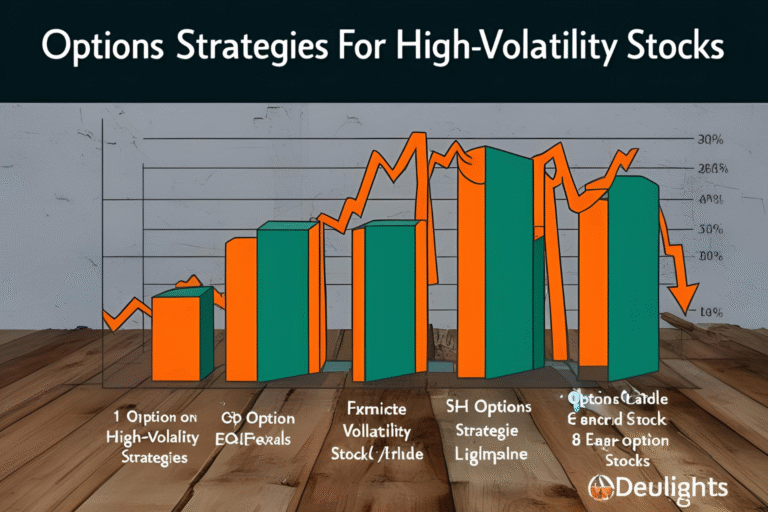Case Study: How a 10% Daily Mover Behaved Over 5 Days
Trading high-volatility stocks can be both rewarding and risky. One of the best ways to understand volatility in action is through real case studies. In this post, we’ll explore how a stock that moved 10% in a single session behaved over the next five trading days—highlighting what traders can learn from such extreme price action.
The Setup: Day 1 — The Initial 10% Move
Stock: TICKER (example stock used for illustration)
Sector: Tech
Price at open: $18.20
Price at close: $20.05
Change: +10.16%
Volume: 3.5× relative volume
Catalyst: Positive earnings surprise + analyst upgrade
Observations:
- The stock gapped up at the open
- Strong buying pressure in the first hour
- Closed near day’s high, signaling bullish sentiment
Technical Indicators:
- RSI spiked to 72
- Price broke above 50-day moving average
- VWAP held as dynamic support
Day 2 — Continuation or Consolidation?
- Opening price: $20.10
- Intraday range: $20.00 – $20.80
- Closing price: $20.30 (+1.25%)
What happened:
- The stock held above the previous high
- Lower volume suggests cooling momentum
- Tight range day (inside bar) formed
Trader insight:
This is typical behavior after a big move—buyers pause, and smart money watches for a breakout or pullback.
Day 3 — A Pullback Day
- Open: $20.10
- Low: $19.10
- Close: $19.50 (−3.9%)
Catalyst: Sector weakness + market-wide dip
Technical breakdown:
- Broke below VWAP in the morning
- Found support near previous breakout level ($19.00)
- Volume rose on the dip—possible dip-buyers stepping in
Key lesson:
Volatile stocks often retrace after aggressive moves. Look for retracement zones, not just straight continuations.
Day 4 — Recovery and Breakout Attempt
- Open: $19.60
- High: $21.00
- Close: $20.85 (+6.9%)
What triggered it:
- Sector bounce
- Social media buzz + options activity surge
Trade scenario:
- Intraday breakout above Day 1 high ($20.05)
- High volume breakout on 15-min chart
- Consolidated in the afternoon
Pattern: Cup-and-handle forming on 4-hour chart
Day 5 — Exhaustion or New Base?
- Open: $20.90
- High: $21.50
- Low: $20.30
- Close: $20.45 (−1.9%)
Observations:
- Tried to continue upward but faced resistance
- Slower volume
- Price closed slightly below key breakout zone
Implication:
Stock may now consolidate or fade back to its 5-day average before making its next big move.
5-Day Recap Summary
| Day | Close | Change | Notable Action |
|---|---|---|---|
| Day 1 | $20.05 | +10.2% | Breakout on earnings & upgrade |
| Day 2 | $20.30 | +1.25% | Tight range, inside bar |
| Day 3 | $19.50 | −3.9% | Pullback to support |
| Day 4 | $20.85 | +6.9% | High-volume breakout |
| Day 5 | $20.45 | −1.9% | Resistance + slowdown in momentum |
Key Lessons from This Case Study
- Big movers often need a reset — Don’t expect 5 green days in a row.
- Volume tells the story — Pay attention to fading or rising interest.
- Support zones matter — Pullbacks to breakout levels often bring buyers.
- Catalysts drive volatility — Earnings, analyst upgrades, or sector rotations lead.
- Volatile stocks can trap late traders — Manage risk and avoid chasing extended moves.
FAQs
Should I buy a stock right after it moves 10%?
Not blindly. Wait for consolidation or a clean breakout above key resistance with volume confirmation.
How can I trade the second-day move?
Watch the opening range. If the stock holds the prior high with volume, a breakout is more likely.
Is it better to swing or scalp a volatile stock?
That depends on the setup. If the move is news-based, scalping may work best. If there’s a pattern forming, swing trading can be effective.
What risk management should I use?
Tight stops and smaller position sizes are crucial when trading high-volatility names.
Where can I find these 10% movers?
Use screeners like Finviz, Webull, or TradingView with filters for % change and volume spikes.




